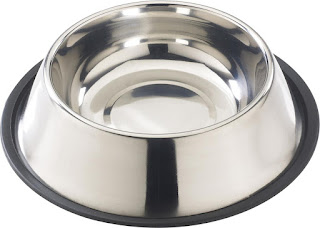The first type of dog clothing that is particularly practical and comfortable is the drying coat, which is typically made from high quality double thickness cotton toweling. This item is very similar to a horse blanket and very easy to put on and take off.
 |
| Dog Towel |
This coat is designed to help your dog dry off after he or she has gotten wet. The drying coat can be ideal if they have been in the river or the sea, or simply if they have been out for walk on a rainy day. This type of garment is especially helpful for drying your dog off quickly and easily when out and about.
Most drying coats are simply towels which can be wrapped around your dog quickly and very easily. Due to their soft material they can also help dogs stay warm even if they have gotten wet. You can often buy these items from specialist dog products suppliers, tailored in size for the breed of dog that you own.
 |
Quilted Bomber Dog Vest |
The next type of a garment you can buy that is very comfortable and practical for your dog is a quilted country coat. These are especially useful for dogs in the winter time when the weather is not so good, and they may need a bit of warmth and waterproof protection - they are especially useful for older dogs or more frail dogs as well as dogs with very thin coats.
The typical quilted coat will have a waterproof or shower proof coating and will have a fleece lining in order to keep your dog warm. Although some dogs may not need winter clothing, many owners actually find it very practical as it allows their pet to stay healthy and warm if they are very uncomfortable or get cold easily in chilly weather.
 |
| Dog Raincoat |
Another very practical item is the dog raincoat, which comes in breathable yet waterproof material and with Velcro fastenings to make sure that it is not too tight fitting or restrictive for your dog. Often this 'Pac-a-Mac' style is very convenient and is great to take around with you to put on your dog when the weather turns bad all of a sudden.
 |
| Tweed Dog Coat |
Last but not least, there is a very popular option that is as stylish as it is practical. This garment is, of course, the tweed dog coat which is not only a very practical and comfortable piece of clothing but one that looks stunning too. The tweed dog coat often comes in pure tweed and features a typical tan and check color, and there may be embellishments such a fleece lining and a faux fur collar trim.
These coats can just rest on the back of the dog or can wrap around the dog entirely in a similar fashion to the drying coat. These allow your dog different levels of warmth and are often popular with those who spend a lot of time outside in the cold weather. Tweed is a very warm and durable material and is also very comfortable for your dog to wear.
Whether you decide to buy a tweed dog coat or instead just a waterproof one to keep them dry in wet weather, there are plenty of stylish and practical dog coats available on the market. Just make sure that you choose an item that your dog is comfortable wearing and that you choose the correct size for your furry friend.
Source:








































